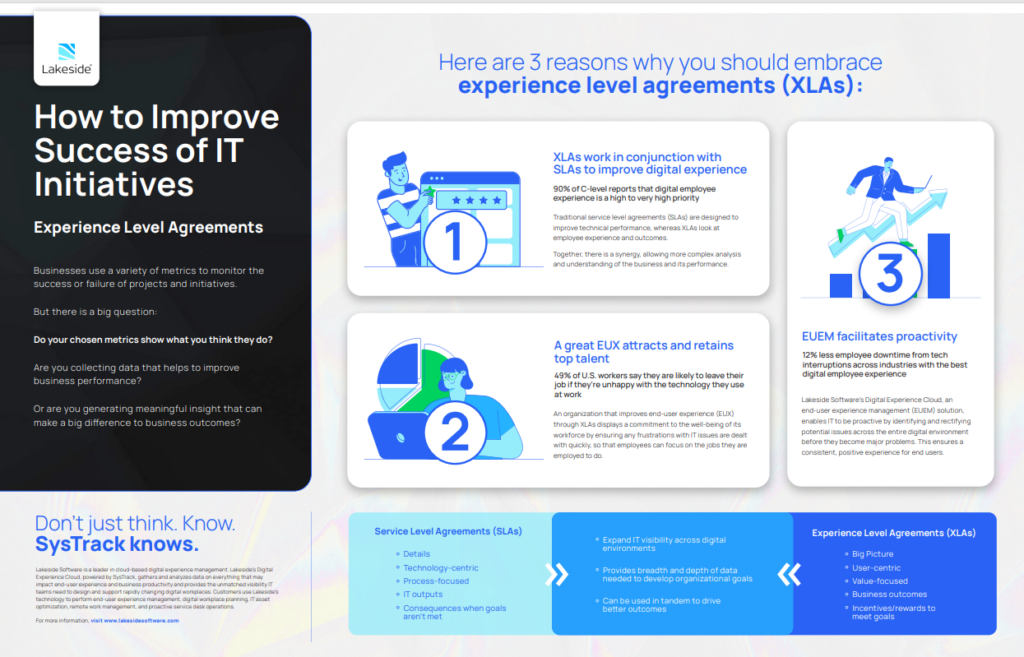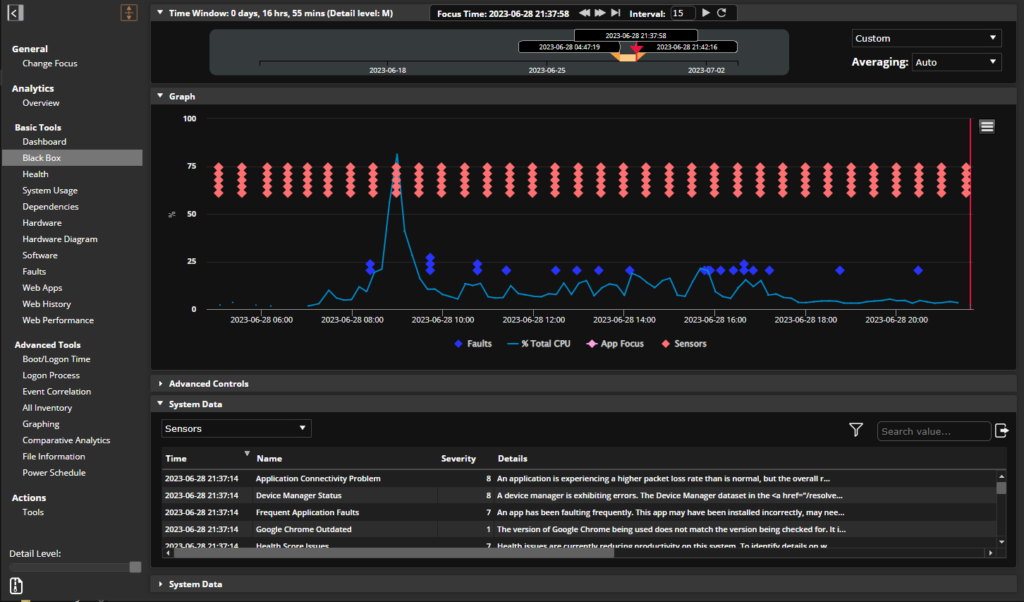
3 reasons to embrace experience level agreements, and the benefits successfully implemented XLAs can bring to businesses
If the last few years have taught us anything, it’s that providing a great digital employee experience (DEX) is no longer optional. Remote and hybrid workforces are here to stay, which has made it even more difficult for many organizations to monitor their entire IT estate. This blind spot usually leads to more technology issues and employee dissatisfaction — but it doesn’t have to be that way.
Here’s where putting a proactive IT strategy into place comes in. Having the ability to identify and fix issues that could negatively impact end users’ productivity before they realize a problem exists will substantially help companies improve the overall digital experience. It will also reduce the amount of service tickets the IT team receives, freeing up time to focus on bigger initiatives and broader IT operations improvements.
So how exactly can businesses pivot from a reactive to proactive IT approach? One major factor is implementing experience level agreements — or XLAs. Unlike service level agreements (SLAs), which focus only on how technology performs, XLAs are designed to provide a broader, more holistic perspective that is based on end-user experience. This shift from technology-focused data to employee experience-focused data intentionally encourages modern thinking when it comes to understanding IT’s performance, rather than relying on dated metrics that only show half the picture.
3 Reasons to Embrace XLAs
When designed correctly, XLAs help organizations to increase productivity and employee satisfaction by measuring and improving how users interact with workplace technology. Why is it important to include XLAs in your IT strategy? Three main reasons. XLAs:
- Work in conjunction with SLAs, providing a more holistic view with real-time data about the entire employee experience.
- Lessen or eliminate technology interruptions to employees’ day-to-day workflow, therefore increasing employee productivity and engagement.
- Help organizations attract and retain top talent in a competitive market due to a stronger digital employee experience, which has become a key factor in where candidates and employees choose to work.
A Client Success Story: LexisNexis Transforms Employee Experience
While this sounds good on paper, it’s always better to see the results of how different IT strategies and approaches have helped real companies with the operational challenges they face.
LexisNexis, part of the multinational information and analytics company RELX, came to Lakeside with one main problem: They needed more visibility into their customers’ digital experience. The organization was making decisions without data to back it up, but after creating 50 different XLA metrics, it saw benefits including:
- Fewer reactive service tickets filed and more satisfied customers due to IT identifying problems before they were impacted.
- A single source of truth for asset management, particular with more strategic device lifecycle decisions that led to substantial cost savings for the business.
- Improved customer productivity because of a better system and device health scores.
Though implementing XLAs might seem daunting, putting the work in will pay off in the long run. Now that you understand the “why,” let us help you with the “how”: Watch our free, on-demand webinar with Forrester for tips on bringing your XLA strategy to life.
Create XLAs that Fit Your Business Goals
Explore the digital experience insights your organization needs to implement successful experience level agreements. Request a customized demo.
Subscribe to the Lakeside Newsletter
Receive platform tips, release updates, news and more




